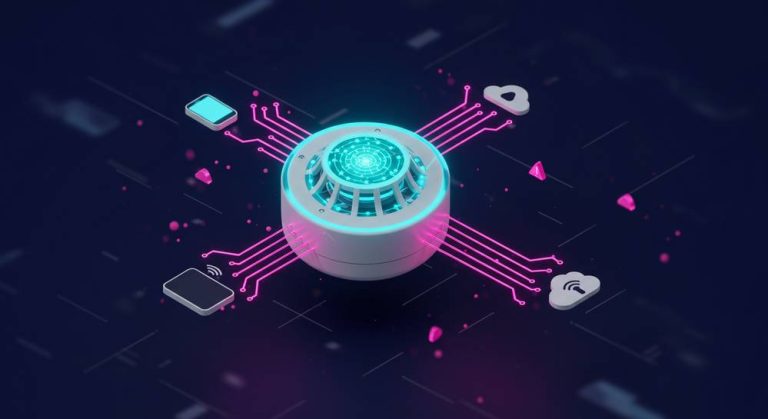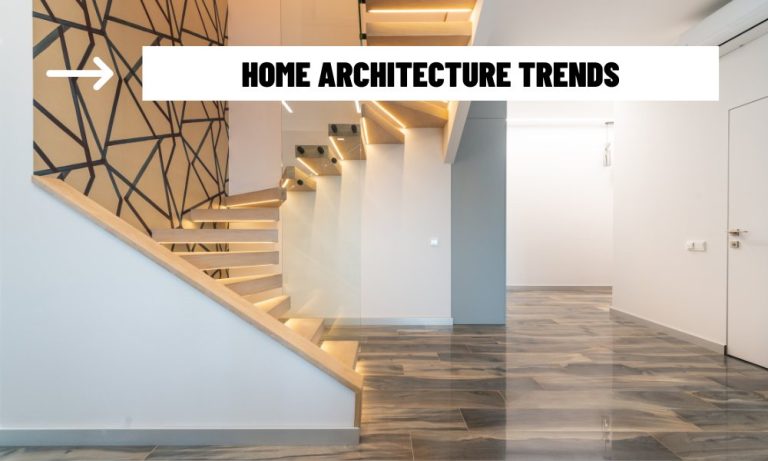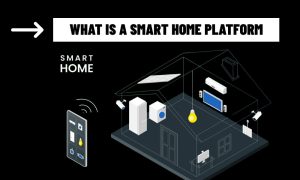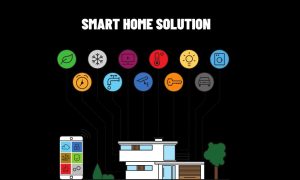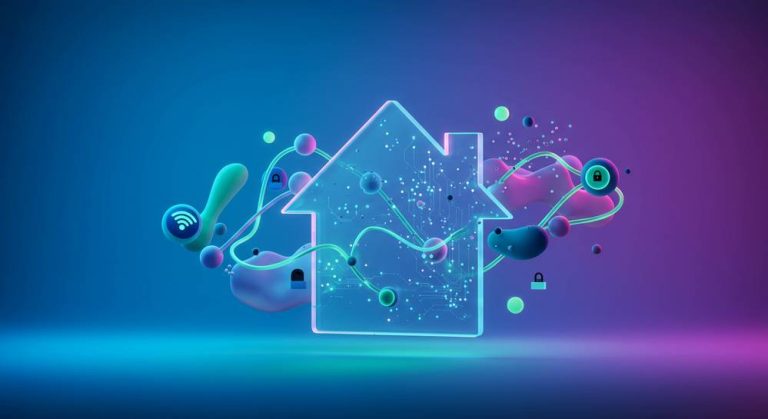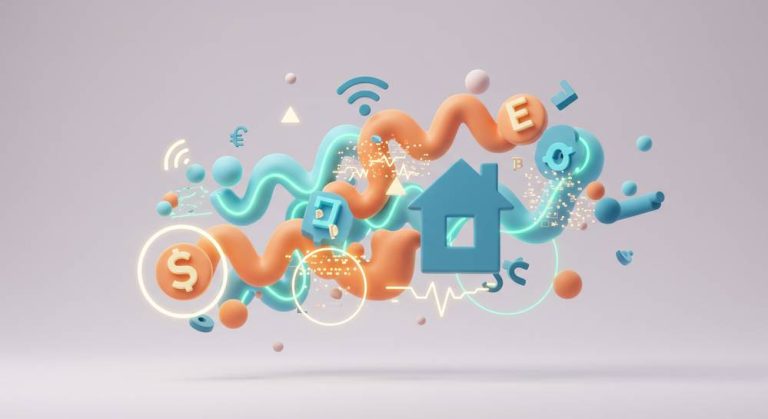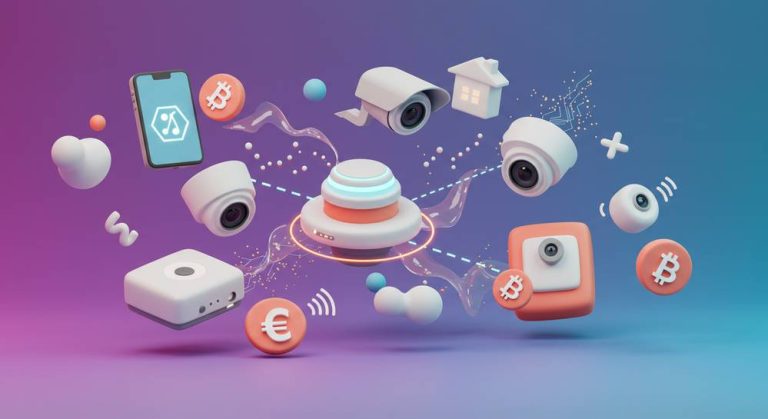The idea of a smart home used to be something out of science fiction, but today, it’s an exciting reality thanks to the magic of Internet of Things (IoT) technology. From controlling your lights with a voice command to having your thermostat adjust automatically when you leave the house, Smart Home IoT is revolutionizing how we interact with our living spaces.
Smart Home IoT
At its core, Smart Home IoT refers to the integration of internet-connected devices in your home that communicate with each other, making your home smarter, more efficient, and more convenient. The “IoT” part stands for the Internet of Things, a term used to describe a network of physical devices embedded with sensors, software, and other technologies that allow them to collect and exchange data.
When it comes to the home, this means your everyday devices—things like lights, thermostats, refrigerators, security systems, and more—can be connected to the internet. These devices can then be controlled remotely, or even interact with each other, without you lifting a finger. It’s like having a home that thinks for you, anticipating your needs and preferences before you even realize them.
How Does Smart Home IoT Work?
Smart Home IoT works through a network of connected devices that communicate over the internet. These devices are typically part of a larger ecosystem that enables seamless interaction between them. Here’s how it all fits together:
1. Devices and Sensors
Each smart device in your home is equipped with sensors and actuators that help it monitor and respond to its environment. For example:
A smart thermostat uses temperature sensors to measure room temperature.
Smart security cameras detect motion or record video feeds.
Smart lights use sensors to adjust brightness based on ambient light.
2. Communication and Connectivity
These devices need to be able to communicate with each other. To do so, they use a variety of communication protocols like Wi-Fi, Bluetooth, Z-Wave, and Zigbee. These technologies allow devices to transmit data and receive commands, enabling remote access and control.
3. Cloud-Based Control and Data Storage
The cloud plays a significant role in Smart Home IoT. Many smart devices send data to cloud servers, where it is processed and analyzed. This enables the devices to “learn” from your usage patterns and optimize their performance over time. Additionally, cloud-based systems allow you to access and control your devices from anywhere in the world through a mobile app.
4. Centralized Control Hub
Most smart home ecosystems have a central platform—either an app or a voice assistant like Amazon Alexa, Google Assistant, or Apple Siri—that allows you to control all of your devices in one place. This unified interface is where you can monitor and automate your smart devices, set schedules, and even issue voice commands.

Key Benefits of Smart Home IoT
Smart Home IoT is more than just a convenience; it offers several real-world benefits that can enhance your quality of life. Here’s a look at the top advantages:
1. Convenience and Comfort
Automation: Imagine your home adjusting the lighting, temperature, and even music based on your preferences. With Smart Home IoT, devices can automate based on schedules or triggers. For instance, when you arrive home, your smart thermostat can set the temperature to your preferred level, and the lights will turn on without you having to lift a finger.
Remote Control: Whether you’re at work or on vacation, you can control your home from anywhere via a mobile app. Turn off lights you forgot to switch off, check if the door is locked, or even monitor live video feeds from security cameras.
2. Energy Efficiency
One of the standout features of Smart Home IoT is its ability to help you save energy. Smart thermostats can adjust the temperature in your home based on your schedule, while smart lighting can ensure that lights are turned off when not in use.
By automating these functions and giving you control over your energy consumption, these devices can lead to substantial cost savings on your energy bills. Plus, many systems provide detailed insights into your usage patterns, so you can optimize energy consumption further.
3. Enhanced Security
Smart security devices, such as cameras, motion sensors, and doorbell cameras, offer continuous monitoring of your home. You can view real-time footage, receive instant alerts if motion is detected, and even speak to visitors through a smart doorbell.
Some systems are also equipped with smart locks that let you lock or unlock doors remotely, so you never have to worry if you forgot to lock the door before leaving.
4. Personalization
Smart devices learn your habits over time and adjust to fit your lifestyle. For example, a smart speaker might start playing your favorite music in the morning when you wake up, or a smart fridge could remind you when food is about to expire.
This personalized experience adds another layer of comfort and makes your home feel even more in tune with your needs.
Examples of Smart Home IoT Devices
To understand how Smart Home IoT fits into your everyday life, consider these practical examples:
Smart Thermostats: Devices like Nest or Ecobee can learn your schedule and adjust your home’s temperature accordingly, ensuring maximum comfort while reducing energy consumption.
Smart Lighting: With systems like Philips Hue or LIFX, you can adjust your home’s lighting remotely, change colors, or set schedules. The lights can even sync with music or movies for an immersive experience.
Smart Security: Cameras like Ring, Arlo, and Nest Cam offer live streaming, motion detection, and cloud storage of footage. With smart locks like August or Schlage, you can lock and unlock your doors remotely, providing peace of mind no matter where you are.
Smart Appliances: Devices like smart refrigerators, washing machines, and even coffee makers can be controlled through IoT networks, offering convenience and more intelligent usage patterns. For example, a smart fridge might notify you when you’re running low on milk.
Why Is Smart Home IoT Important?
As the world becomes more connected, the need for seamless, intelligent systems within the home becomes increasingly important. Smart Home IoT helps create a living environment that is not only more comfortable but also efficient, secure, and future-ready.
The flexibility to control, automate, and monitor your home from anywhere provides unprecedented convenience. Moreover, with ongoing advancements in AI and machine learning, Smart Home IoT devices are becoming smarter and more capable of anticipating your needs.
The Future of Smart Homes Is IoT
The future of home living is undoubtedly smart. With Smart Home IoT, homes are evolving into environments that learn from your habits, adjust to your preferences, and provide a higher level of convenience, comfort, and security.
From energy efficiency and personalized experiences to improved safety and convenience, Smart Home IoT is changing the way we interact with our homes—and it’s just the beginning. With new innovations on the horizon, smart homes will become even more intuitive, connected, and responsive.
Are you ready to experience the future of living? Smart Home IoT is not just a trend, it’s the way of the future—and it’s time to embrace it.


